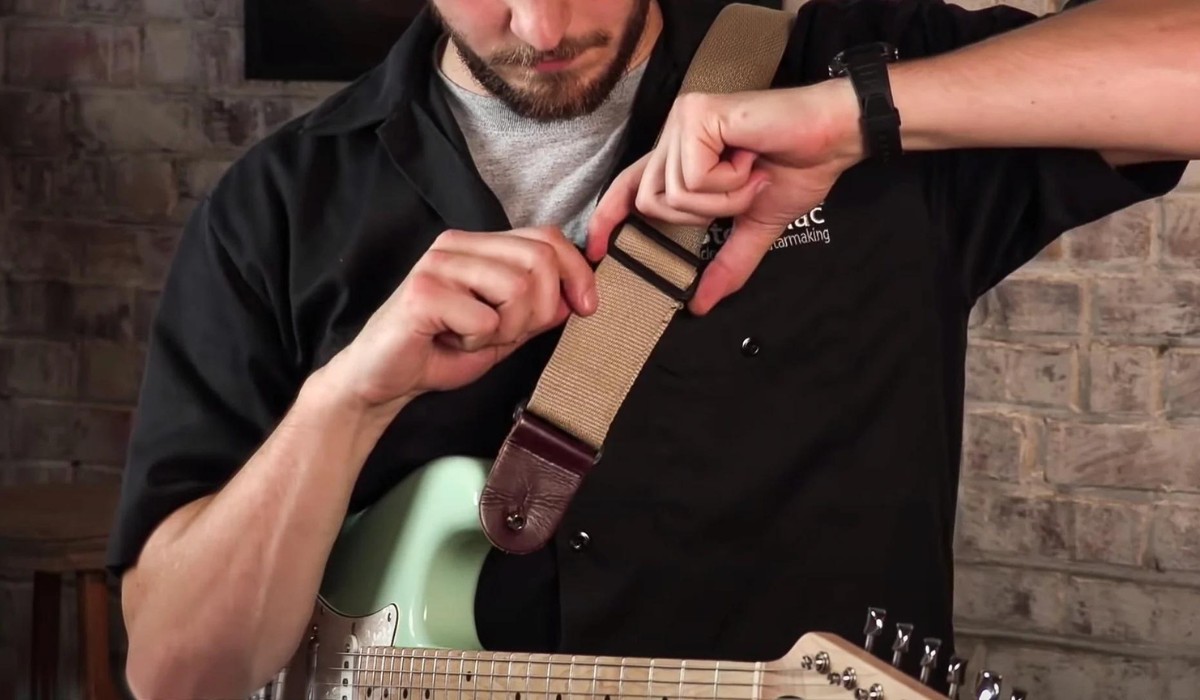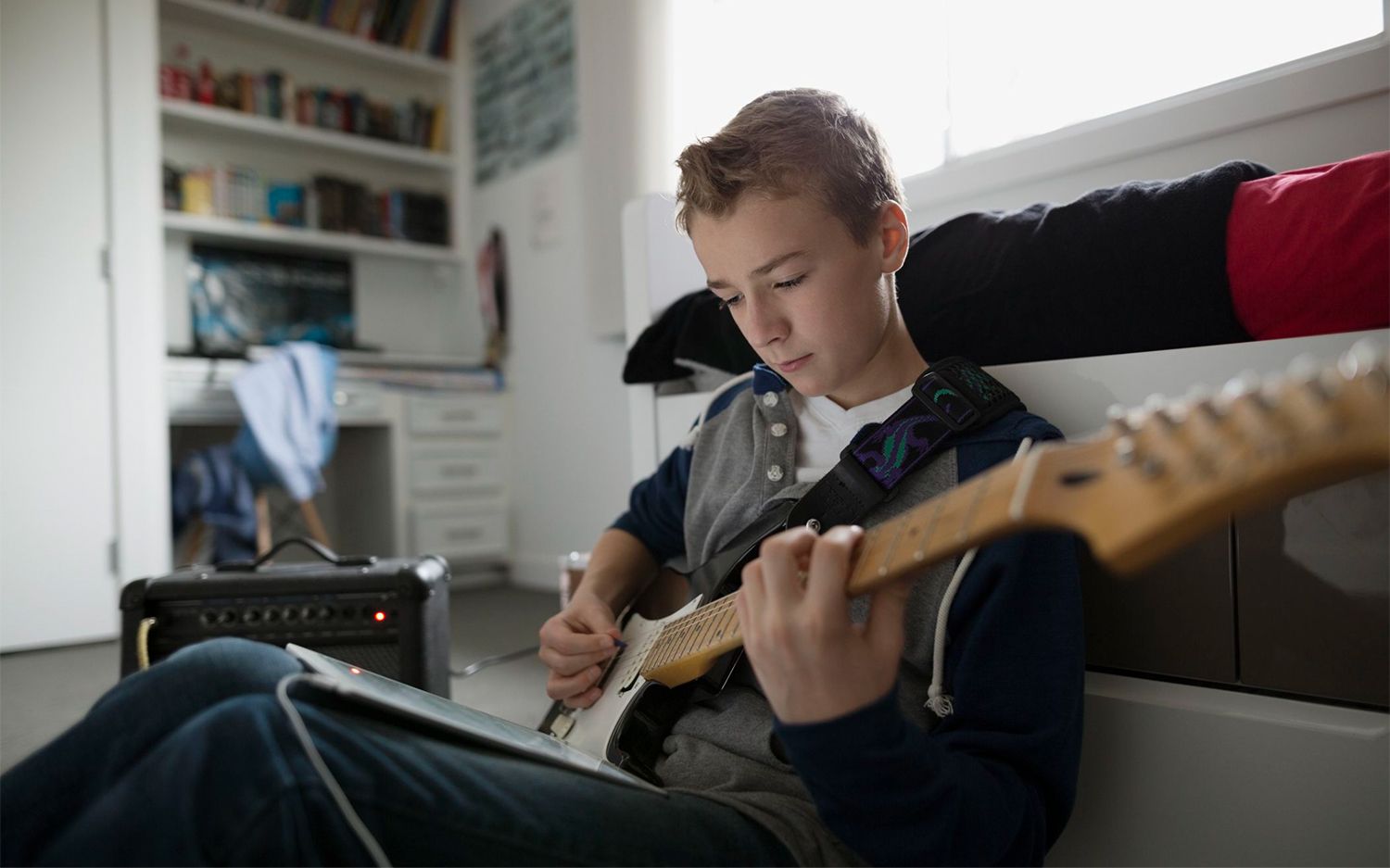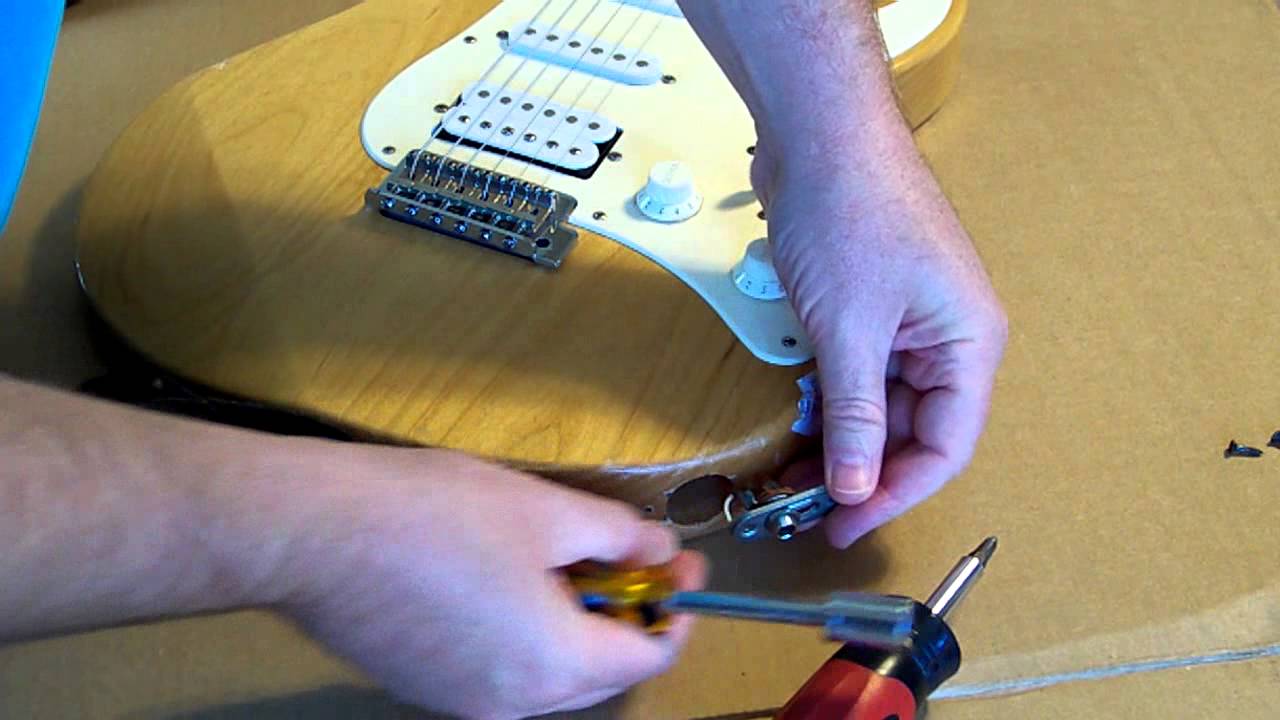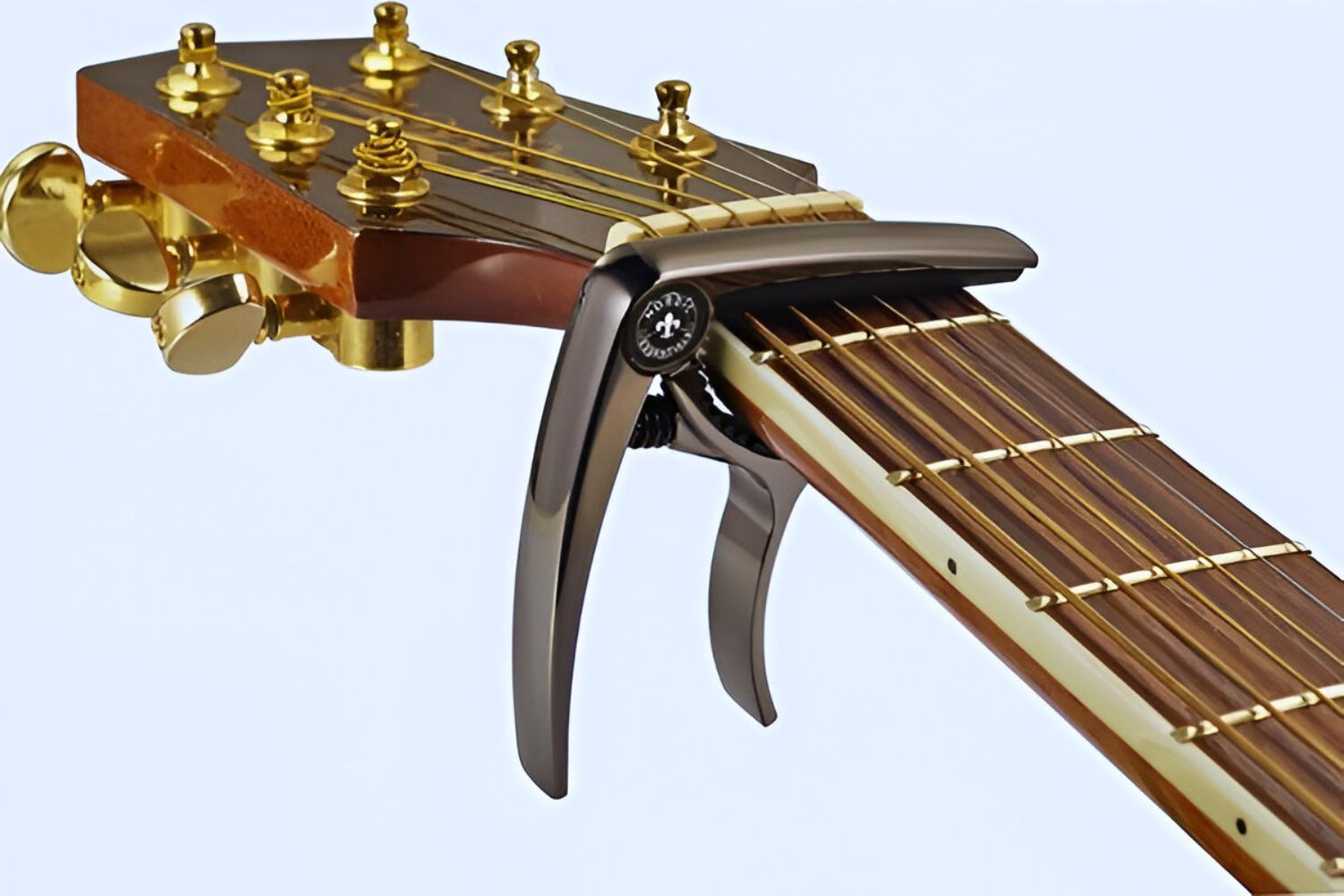Introduction
When it comes to playing the electric guitar, finding the perfect seated position is crucial for comfort, stability, and optimal performance. Whether you're a beginner or a seasoned guitarist, mastering the art of holding an electric guitar while sitting down is essential for honing your skills and enjoying extended practice sessions. In this comprehensive guide, we'll explore the key steps to achieving an ideal seated posture, from selecting the right seat to maintaining balance and using a footrest when necessary. By following these practical tips, you'll not only enhance your playing experience but also reduce the risk of discomfort or strain.
Playing the electric guitar while seated offers a different set of challenges compared to standing, as the body's positioning and the instrument's stability play a crucial role in producing quality sound and executing complex techniques. Therefore, understanding the nuances of holding an electric guitar while sitting down is fundamental for any aspiring guitarist. Whether you're practicing at home, jamming with friends, or performing on stage, the techniques covered in this guide will help you feel more at ease and in control, ultimately allowing your passion for music to shine through effortlessly.
So, let's dive into the essential aspects of holding an electric guitar while sitting down, ensuring that you can play with confidence, comfort, and precision. Whether you prefer the classic elegance of a traditional seated posture or a more contemporary approach, these guidelines will empower you to find a comfortable and sustainable position that complements your unique playing style. With a bit of practice and attention to detail, you'll soon discover the joy of effortlessly maneuvering your electric guitar while seated, unlocking a world of musical possibilities right at your fingertips.
Choosing the Right Seat
Before delving into the intricacies of holding an electric guitar while sitting down, it’s crucial to start with the foundation: selecting the right seat. The ideal seat will provide stability, comfort, and proper support, allowing you to focus on your playing without unnecessary strain or discomfort.
When choosing a seat for playing the electric guitar, consider the following factors:
- Back Support: Opt for a chair with a straight back or use a backrest to maintain good posture. This helps prevent slouching and reduces strain on your back and shoulders during extended practice sessions.
- Comfort: Look for a seat with adequate cushioning to support your weight and promote comfort. It’s essential to feel at ease while playing, as tension or discomfort can hinder your performance and enjoyment.
- Height: Ensure that the seat allows you to keep both feet flat on the floor, promoting stability and balance. Adjustable chairs or stools are beneficial for achieving the perfect height for playing the electric guitar.
- Stability: Choose a seat that is sturdy and stable to provide a reliable base for your playing. Avoid chairs that wobble or lack proper support, as they can affect your posture and concentration.
Additionally, consider the overall ergonomics of the seat and how it complements your body’s natural alignment. Experiment with different types of chairs or stools to find the one that best suits your physique and playing style. Whether it’s a traditional armless chair, a specialized guitar stool, or a versatile adjustable seat, the goal is to find a seat that enhances your playing experience and supports your posture effectively.
By prioritizing the selection of an appropriate seat, you lay the groundwork for a comfortable and sustainable seated position, setting the stage for seamless guitar playing and musical expression. With the right seat in place, you’re ready to move on to the next crucial step: positioning the guitar for optimal playability and comfort.
Positioning the Guitar
Once you’ve chosen the right seat, the next step in mastering the art of holding an electric guitar while sitting down is to focus on the positioning of the instrument. Proper guitar positioning not only ensures comfort and stability but also facilitates fluid movement and effortless access to the fretboard and controls. Here’s how to position your electric guitar for an optimal playing experience:
- Body Placement: Sit comfortably on the chosen seat, ensuring that your back is well-supported and your posture is upright. Position the lower bout of the guitar on your right thigh (for right-handed players) or left thigh (for left-handed players), allowing the instrument’s body to rest against your leg for stability.
- Angle of the Guitar: Tilt the neck of the guitar slightly upward, maintaining a natural angle that allows for easy reach and visibility of the fretboard. Find a balance where the guitar neck is accessible without causing strain on your wrist or arm.
- Arm Position: Keep your strumming or picking arm relaxed and close to your body, allowing for smooth and unhindered movement across the strings. Avoid excessive tension in your arm and shoulder, as it can lead to fatigue and restrict your playing dynamics.
- Balance and Stability: Ensure that the guitar is positioned securely on your thigh, with the body and neck forming a stable and balanced configuration. This setup promotes control and precision while minimizing the need for excessive adjustments during play.
By paying attention to these key aspects of guitar positioning, you create an environment that supports your playing technique and overall comfort. The goal is to achieve a natural and relaxed posture that allows for unrestricted movement and effortless execution of chords, melodies, and techniques. As you become more familiar with the optimal positioning of your electric guitar, you’ll notice an improvement in your playing fluidity and a reduction in physical strain, enabling you to focus on expressing your musical creativity with ease.
With the guitar comfortably positioned and your posture aligned, you’re ready to explore the next vital element of holding an electric guitar while sitting down: finding the right balance to maintain stability and control throughout your playing sessions.
Finding the Right Balance
Attaining the perfect balance while holding an electric guitar while sitting down is essential for maintaining stability, comfort, and control during your playing sessions. Achieving a balanced posture not only enhances your performance but also reduces the risk of fatigue and strain, allowing you to play for extended periods without compromising your comfort. Here’s how to find the right balance when seated with your electric guitar:
- Center of Gravity: Situate the guitar’s body in a position that aligns with your center of gravity, promoting stability and minimizing the need for excessive adjustments while playing. This ensures that the instrument feels naturally integrated with your seated posture, allowing for effortless movement and control.
- Equal Weight Distribution: Distribute your body weight evenly on the seat, avoiding leaning too far in any direction. This balanced distribution of weight contributes to a stable foundation for playing and reduces the likelihood of discomfort or tension in specific areas of your body.
- Relaxed Posture: Maintain a relaxed and natural posture, allowing your body to move freely and comfortably while supporting the weight of the guitar. Avoid tensing your muscles unnecessarily, as this can lead to fatigue and hinder your playing dynamics.
- Adjustment Flexibility: Position yourself in a way that allows for minor adjustments without disrupting your overall balance. This adaptability is particularly beneficial for accommodating different playing styles, techniques, and musical genres without compromising your stability.
By focusing on these principles of balance, you create an environment that promotes a seamless and enjoyable playing experience. The goal is to establish a connection between your body, the seat, and the guitar, allowing for harmonious movement and control as you navigate the instrument’s fretboard and controls. As you become more attuned to the nuances of maintaining balance while holding an electric guitar while sitting down, you’ll notice an improvement in your overall playing comfort and a greater sense of control and confidence.
With the right balance in place, you’re equipped to delve into an additional consideration for optimizing your seated playing posture: the use of a footrest, if necessary, to further enhance your comfort and stability.
Using a Footrest (If Necessary)
While finding the right balance and posture is essential for holding an electric guitar while sitting down, some guitarists may benefit from using a footrest to further optimize their playing position. A footrest can provide additional support, promote better posture, and enhance overall comfort during extended practice or performance sessions. Here’s how to determine if a footrest is necessary and how to use it effectively:
Assessing the Need: Pay attention to your lower body’s positioning and comfort while seated with the guitar. If you find that your legs are not at an ideal angle or if your feet are not fully grounded, a footrest may help in achieving a more ergonomic and stable posture. Additionally, if you experience discomfort or strain in your lower back or legs due to an awkward seating position, a footrest can alleviate these issues.
Choosing the Right Footrest: Select a footrest that is adjustable to accommodate various heights and angles, allowing you to customize it to your specific needs. Some footrests feature a non-slip surface to ensure stability, while others offer different height settings to cater to individual preferences. Consider the portability and sturdiness of the footrest, especially if you plan to use it for performances or practice sessions in different locations.
Positioning and Usage: Place the footrest in a position that allows your non-dominant foot to rest comfortably, creating a stable and balanced foundation for your seated posture. The footrest should facilitate a natural angle for your leg, promoting better circulation and reducing the risk of stiffness or discomfort during prolonged playing. Experiment with different heights and angles to find the most supportive and comfortable position for your foot.
Benefiting from Support: By incorporating a footrest into your seated playing setup, you can experience improved lower body alignment, reduced muscle tension, and enhanced overall comfort. The footrest contributes to a more relaxed and sustainable playing posture, allowing you to focus on your music without the distraction of physical discomfort or fatigue.
Whether you opt for a dedicated guitar footrest or a multi-purpose adjustable footrest, the goal is to enhance your playing experience by promoting better lower body support and alignment. With the option of using a footrest, you can further customize your seated playing position to suit your unique physique and playing style, ensuring that you can perform or practice with ease and confidence.
Conclusion
Mastering the art of holding an electric guitar while sitting down is a fundamental skill that significantly impacts your playing comfort, stability, and overall musical expression. By carefully selecting the right seat, positioning the guitar for optimal playability, finding the perfect balance, and, if necessary, using a footrest, you can create a conducive environment for honing your craft and enjoying seamless playing sessions. These essential considerations not only contribute to your physical well-being but also empower you to focus on your music with confidence and control.
As you navigate the intricacies of holding an electric guitar while seated, remember that the goal is to achieve a natural and sustainable playing posture that complements your body’s unique dynamics and playing style. Whether you’re a beginner exploring the basics or an experienced guitarist refining your technique, the principles outlined in this guide serve as foundational steps toward enhancing your playing experience and promoting long-term comfort and enjoyment.
Embrace the process of experimentation and adaptation as you fine-tune your seated playing position, allowing yourself the flexibility to make adjustments that cater to your evolving needs and preferences. By prioritizing your physical well-being and comfort, you set the stage for a fulfilling and enduring musical journey, where your passion for the electric guitar can flourish unhindered.
Ultimately, the art of holding an electric guitar while sitting down is a deeply personal and nuanced practice, shaped by your individual physique, playing preferences, and musical aspirations. By integrating the insights and techniques presented in this guide into your playing routine, you’ll not only refine your seated posture but also cultivate a deeper connection with your instrument, unlocking new possibilities for creativity and self-expression.
With these foundational principles at your disposal, you’re poised to embark on a journey of musical discovery, where the seamless interaction between you, your electric guitar, and your seated posture becomes a harmonious and effortless expression of your artistry.

























